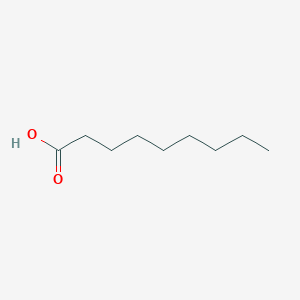| Evidences: |
|
14983052
Malnic B, Godfrey PA, Buck LB. The human olfactory receptor gene family. Proc Natl Acad Sci U S A. 2004 Feb 24;101(8):2584-9. doi: 10.1073/pnas.0307882100. Erratum in: Proc Natl Acad Sci U S A. 2004 May 4;101(18):7205.
|
|
15550249
Saito H, Kubota M, Roberts RW, Chi Q, Matsunami H. RTP family members induce functional expression of mammalian odorant receptors. Cell. 2004 Nov 24;119(5):679-91. doi: 10.1016/j.cell.2004.11.021.
|
|
15647465
Sanz G, Schlegel C, Pernollet JC, Briand L. Comparison of odorant specificity of two human olfactory receptors from different phylogenetic classes and evidence for antagonism. Chem Senses. 2005 Jan;30(1):69-80. doi: 10.1093/chemse/bji002.
|
|
16606354
Abaffy T, Matsunami H, Luetje CW. Functional analysis of a mammalian odorant receptor subfamily. J Neurochem. 2006 Jun;97(5):1506-18. doi: 10.1111/j.1471-4159.2006.03859.x.
|
|
19166503
Repicky SE, Luetje CW. Molecular receptive range variation among mouse odorant receptors for aliphatic carboxylic acids. J Neurochem. 2009 Apr;109(1):193-202. doi: 10.1111/j.1471-4159.2009.05925.x.
|
|
19261596
Saito H, Chi Q, Zhuang H, Matsunami H, Mainland JD. Odor coding by a Mammalian receptor repertoire. Sci Signal. 2009 Mar 3;2(60):ra9. doi: 10.1126/scisignal.2000016.
|
|
26221959
Harini K, Sowdhamini R. Computational Approaches for Decoding Select Odorant-Olfactory Receptor Interactions Using Mini-Virtual Screening. PLoS One. 2015 Jul 29;10(7):e0131077. doi: 10.1371/journal.pone.0131077.
|
|
25977809
Mainland JD, Li YR, Zhou T, Liu WL, Matsunami H. Human olfactory receptor responses to odorants. Sci Data. 2015 Feb 3;2:150002. doi: 10.1038/sdata.2015.2.
|
|
21700676
Liu X, Su X, Wang F, Huang Z, Wang Q, Li Z, Zhang R, Wu L, Pan Y, Chen Y, Zhuang H, Chen G, Shi T, Zhang J. ODORactor: a web server for deciphering olfactory coding. Bioinformatics. 2011 Aug 15;27(16):2302-3. doi: 10.1093/bioinformatics/btr385.
|
|
View
Modena D, Trentini M, Corsini M, Bombaci A, Giorgetti A. OlfactionDB: A Database of Olfactory Receptors and Their Ligands. Adv. In Life Sci. 2011, 1:1-5. doi: 10.5923/j.als.20110101.01
|
|

